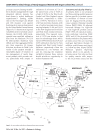The LUGPA Alternative Payment Model for Initial Therapy of Newly Diagnosed Patients With Organ-confined Prostate Cancer: Rationale and Development
- PMID: 29726849
- PMCID: PMC5811880
- DOI: 10.3909/riu0779
The LUGPA Alternative Payment Model for Initial Therapy of Newly Diagnosed Patients With Organ-confined Prostate Cancer: Rationale and Development
Abstract
Over the past several decades, rapid expansion in healthcare expenditures has exposed the utilization incentives inherent in fee-for-service payment models. The passage of Medicare Access and CHIP Reauthorization Act of 2015 heralded a transition toward value-based care, creating incentives for practitioners to accept bidirectional risk linked to outcome and utilization metrics. At present, the limited availability of these vehicles excludes all but a handful of providers from participation in alternative payment models (APMs). The LUGPA APM supports the goals of the triple aim in improving the patient experience, enhancing population health and reducing expenditures. By requiring utilization of certified electronic health record technologies, tying payment to quality metrics, and requiring practices to bear more than nominal risk, the LUGPA APM qualifies as an advanced APM, thereby easing the reporting burden and creating opportunities for participating practices.
Keywords: Alternative payment model; Fee-for-service; Merit-based incentive payment system; Value-based care.
Figures



References
-
- Medicare historic national health expenditures: aggregate and per capita amounts. Centers for Medicare and Medicaid Services website. https://www.cms.gov/Research-Statistics-Data-and-Systems/Statistics-Tren.... Accessed November 22, 2017.
-
- Hsiao WC, Braun P, Dunn D, Becker ER. Resourcebased relative values. An overview. JAMA. 1988;260:2347–2353. - PubMed
-
- The Omnibus Budget Reconciliation Act of 1990 (OBRA-90; Pub.L. 101–508, 104 Stat. 1388, enacted November 5, 1990). Govtrack website. https://www.govtrack.us/congress/bills/101/hr5835. Accessed November 22, 2017.
-
- Balanced Budget Act of 1997 (Pub.L. 105–33, 111 Stat. 251, enacted August 5, 1997). Govtrack website. https://www.govtrack.us/congress/bills/105/hr2015. Accessed November 22, 2017.
-
- National Data: Table 1.1.5. Gross domestic product. Bureau of Economic Analysis website. https://www.bea.gov/iTable/iTable.cfm?reqid=19&step=2#. Accessed November 22, 2017.
Publication types
LinkOut - more resources
Full Text Sources
Miscellaneous
